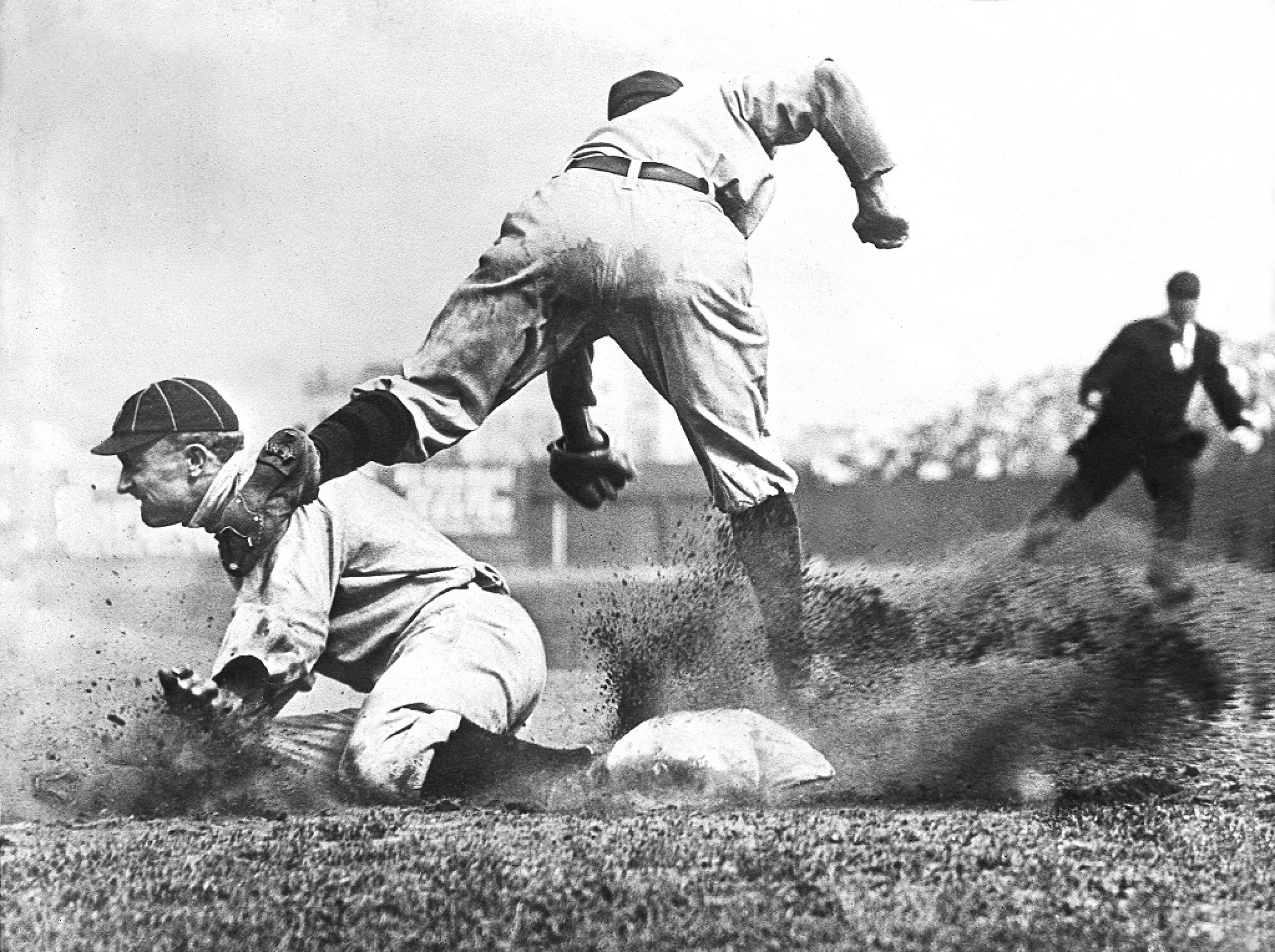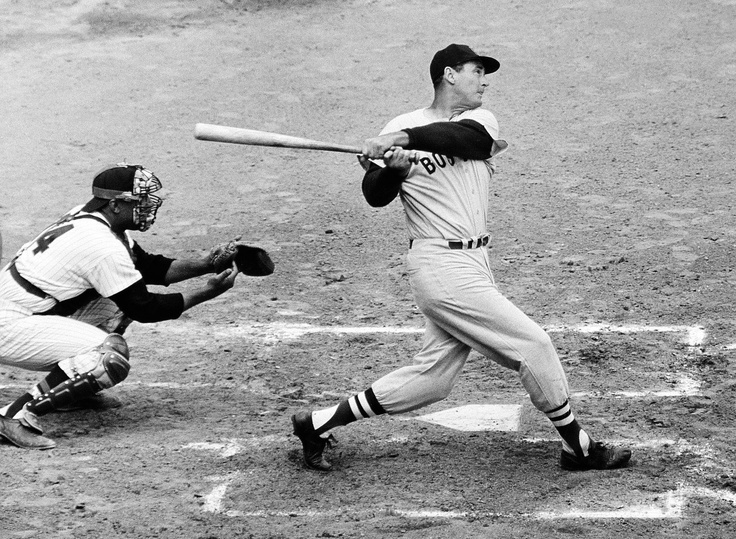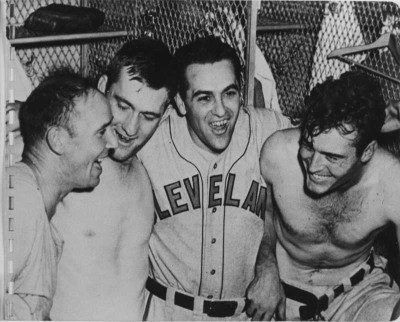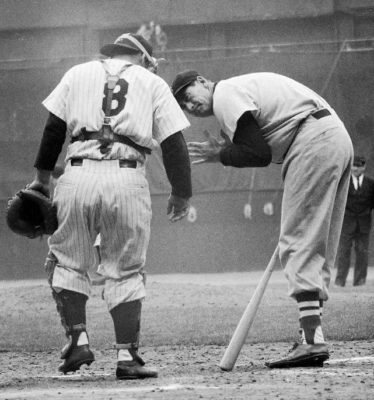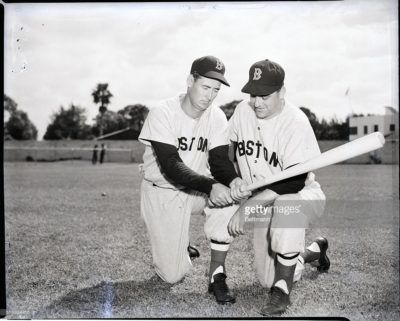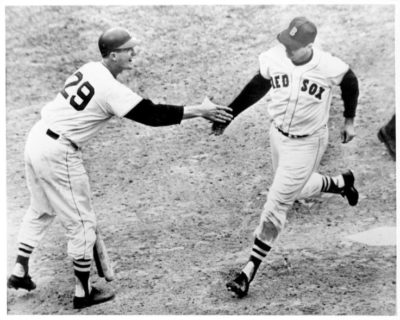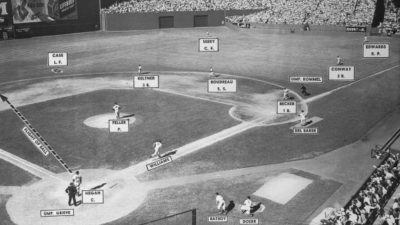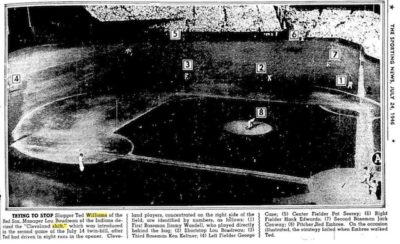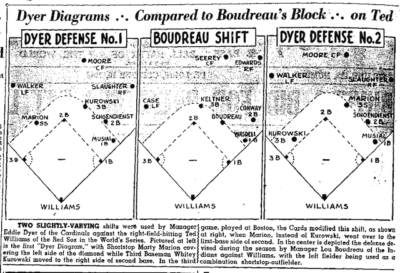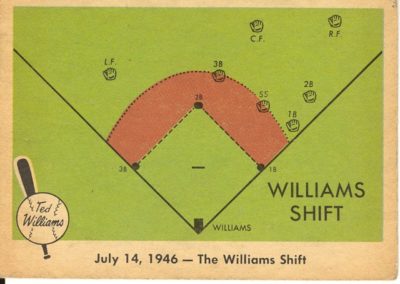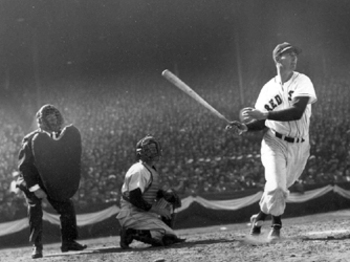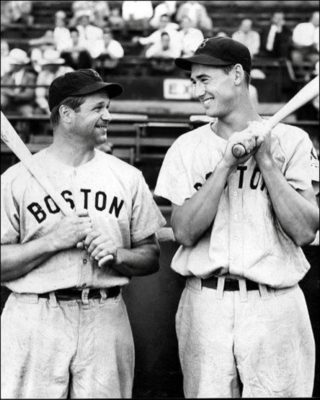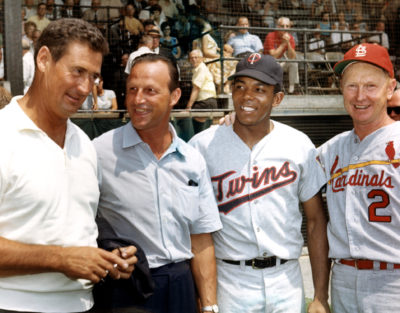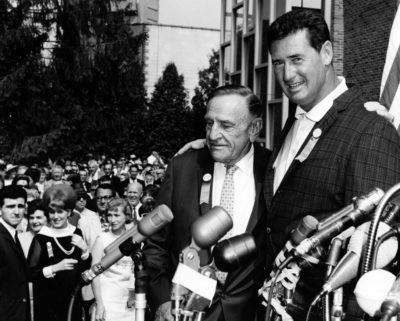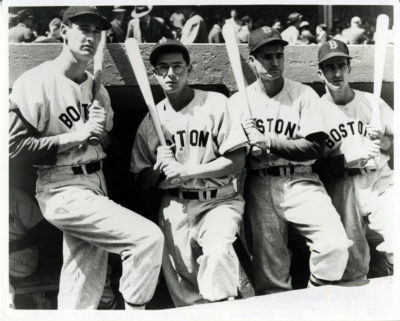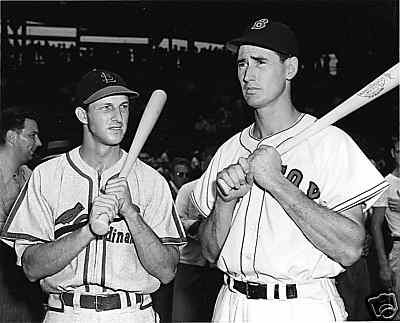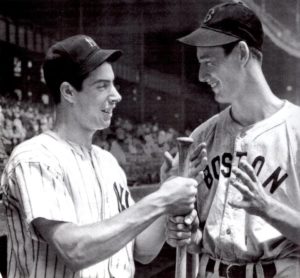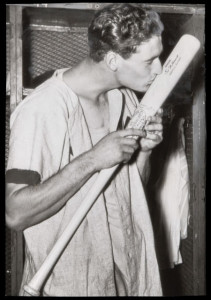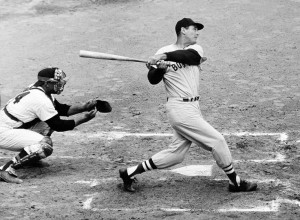Baseball History Comes Alive Now Ranked #2 by Feedspot Among All Internet Baseball History Websites and Blogs!
Guest Submissions from Our Readers Always Welcome!
Subscribe to my blog for automatic updates and Free Bonus Reports: “Memorable World Series Moments” and “Gary’s Handy Dandy World Series Reference Guide.”
Ted Williams and the “Williams Shift” Photo Gallery
Click on any image below to see photos in full size and to start Photo Gallery:
The “Williams Shift” Debuts 71 Years Ago Today!
On July 14, 1946, Cleveland Indians “Boy-Manager” Lou Boudreau came up with the bright idea of an innovative defensive alignment to counteract the offensive prowess of the great Ted Williams. In 1946, Williams was in his first season back from military service in WWII. He was having a sensational MVP year in which he hit .342, with 38 home runs, and 123 RBIs.
The unique shift came in the second game of a double header at Fenway Park. In the first game,Ted went 4-5 with three home runs and eight RBIs. Not a bad day at the office…and enough to drive any opposing manager to desperation. I guess Lou was tired of seeing Ted smashing hits against the Tribe, so he decided to try something new. What did he have to lose and who could blame him?
“Shifts” had been around since at least the 1920s, but the drastic outfield shift employed by Boudreau had never been seen before. Did it work? In a way, yes. In the nightcap, the Splendid Splinter laughed as he strolled to the plate for the first time and viewed the unusual alignment; and then promptly responded with a double off the wall. He went 1-for-2 with a pair of walks; so I guess you could say limiting Ted Williams to “only” a .750 OBP was considered a success of sorts.
The Red Sox won the pennant that year, and faced the Cardinals in the 1946 World Series. Manager Eddie Dyer had noted Boudreau’s unique defensive alignment and decided to employ it. The Cardinals won the World Series with Ted hitting an anemic .5-for-25 (.200), although he was coming off an injury.
Over the years, Williams encountered shifts quite often, and being the proud ball player that he was, famously didn’t do much to alter his hitting style. None other than Ty Cobb once called him “stupid” for not being more adaptable. Finally, a bit of advice from another great hitter, Paul Waner, helped him attack the shift by going the other way without tinkering too much with his carefully honed swing.
Are shifts successful? It’s no surprise they didn’t work all that will on a great hitter like Ted Williams (although some estimate they knocked 15 points off his career average). But they’re generally quite effective in the modern game. According FanGraphs, defenses put on some kind of shift more than 28 percent of the time during the 2016 season. That’s probably because of advanced metrics and probability alignments compiled on every hitter. Yet it took the combination of a great hitter like Williams and a creative baseball mind like Lou Boudreau to bring the innovation to the game in such a memorable way.
In addition to inventing the “Williams shift,” Lou Boudreau helped make history in 1941 as a key figure in stopping Joe DiMaggio’s 56-game hitting streak. After two earlier brilliant defensive plays by Ken Keltner at third, Boudreau made a sensational barehanded snag of DiMaggio’s bad-hop grounder to start a double play and retire DiMaggio and end the streak.
Gary Livacari
Photo Credits: All from Google search
Information: Excerpts edited from article on the Williams Shift: http://www.cbssports.com/mlb/news/just-because-the-ted-williams-shift/ .
We are a participant in the Amazon Services LLC Associates Program, an affiliate advertising program designed to provide a means for us to earn fees by linking to Amazon.com and affiliated sites. Click here to view Amazon’s privacy policy
